A powerful new exhibit at the Museum of Vancouver has recently opened, focusing on the rich culture, traditions, art, and artifacts of the Haida Gwaii. "Haida Now," which runs until June 2019, takes visitors deep into the Haida's supernatural origins, robust pre-colonial trade era, and into their contemporary role in Vancouver and British Columbia.
Curated by Viviane Gosselin, Co-curator and Director of Collections & Exhibitions at MOV with the collaboration of guest Haida curator Kwiaahwah Jones, Haida Now is presented in partnership with The Haida Gwaii Museum and its new director, Nika Collison.
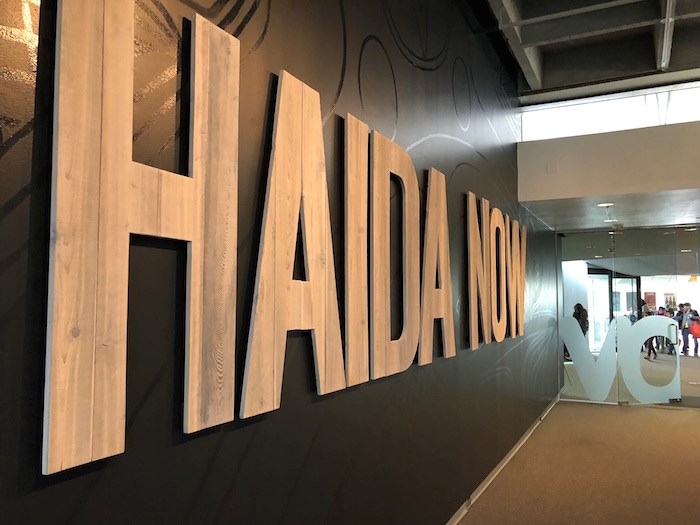 Lindsay William-Ross/Vancouver Is Awesome
Lindsay William-Ross/Vancouver Is Awesome
Two years in the making, "Haida Now" includes over 450 works from the MOV's extensive collection. Ranging from baskets to everyday tools and dishes to clothing, bracelets, carvings, and more, the exhibit also prominently features stirring graphics, timelines, maps and photography projects, as well as several newly-produced documentary features that further probe aspects of the Haida people and culture.
Jones says being accorded the honour of diving into the MOV's impressive collection was a "soul-shaking" and "jaw-dropping" experience. For Jones, who says "the process is the project," she took great pride in bringing light to the Haida Gwaii "in a way that's dignified and in the way it is deserved."
While in the past--with some exception--there has been a vast disconnect between many collectors of First Nations artifacts and the people from which the items came, "Haida Now," is serving as a bridge between the people of Vancouver and B.C. and the Haida Gwaii.
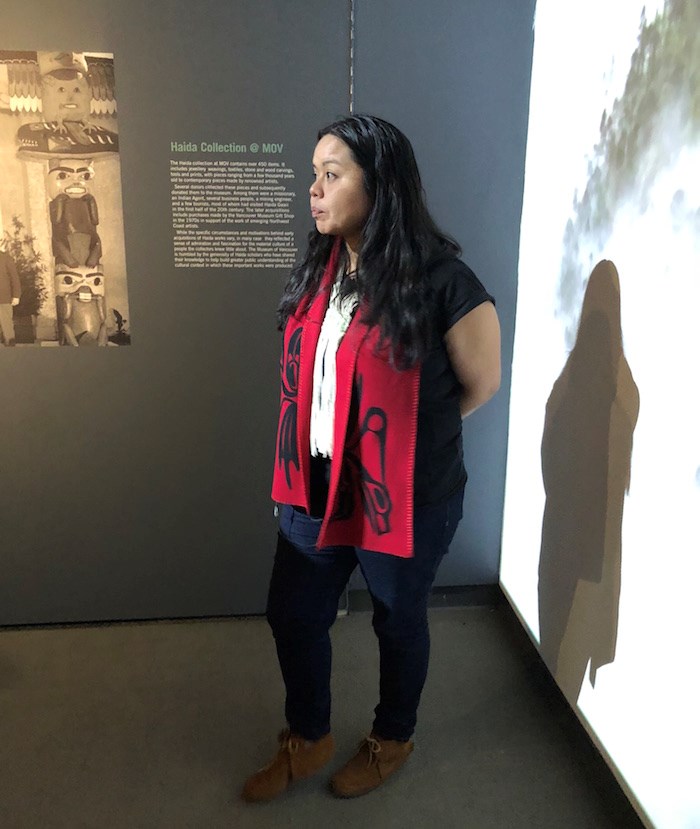 Kwiaahwah Jones describes “Haida Now” at the Museum of Vancouver (Lindsay William-Ross/Vancouver Is Awesome)
Kwiaahwah Jones describes “Haida Now” at the Museum of Vancouver (Lindsay William-Ross/Vancouver Is Awesome)
At the time of "first discovery" in 1774, there were an estimated 30,000 Haida Gwaii. A major smallpox outbreak in the 1860s eradicated much of the population, and a 1915 census shows just 589 Haida Gwaii in B.C., with an estimated 300 having fled to Alaska.
But the Haida Gwaii have shown, and continue to show, remarkable resilience. Now about one-fifth of the Haida Gwaii live in Metro Vancouver, and elect council members to represent their interests in tribal matters.
That resilience is evident in much of what is chronicled and illustrated in "Haida Now," including in the timeline that shows the importance of tattoos to express family and clan status and membership, then its decline when the practice was outlawed, and its re-emergence in contemporary times.
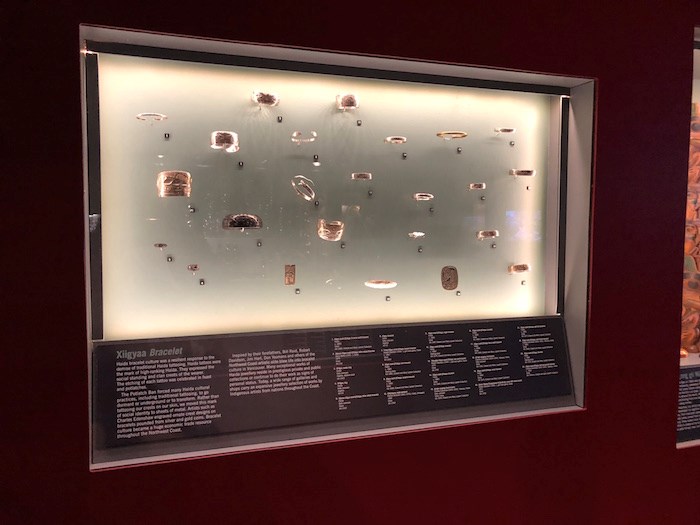 Bracelets (Lindsay William-Ross/Vancouver Is Awesome)
Bracelets (Lindsay William-Ross/Vancouver Is Awesome)
Many other aspects of Haida culture have been suppressed over the centuries, and Jones points to a wall map of indigenous languages in British Columbia as one way in which a project like "Haida Now" is "pulling away the colonial layers of Canada."
The Haida language, incidentally, is an example of a language isolate, meaning it has no relationship to other languages.
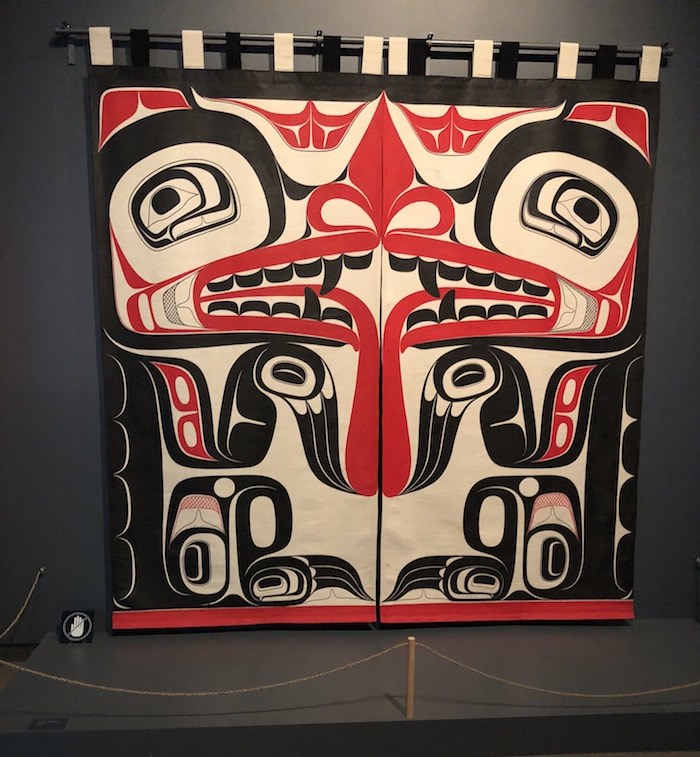 From “Haida Now” at the Museum of Vancouver (Lindsay William-Ross/Vancouver Is Awesome)
From “Haida Now” at the Museum of Vancouver (Lindsay William-Ross/Vancouver Is Awesome)
While there is legacy of thousands of years for the Haida language, their history has been largely passed down in the oral tradition, but also in their objects. Even something as simple as a hat, or facial marking, is a means of communication. Though we can look at these hundreds of pieces in the exhibit and call them "art," Jones says there is no word in Haida for "art."
Instead, as those within the Haida have done, we are asked to "read" their art, and learn how to uncover their stories with their many visual cues.
There are Haida artists, such as Bill Reid, who are represented in "Haida Now." Collison, Reid's granddaughter, acknowledges that Reid was not just a great artist and revered broadcaster, but a "human being," as flawed as us all.
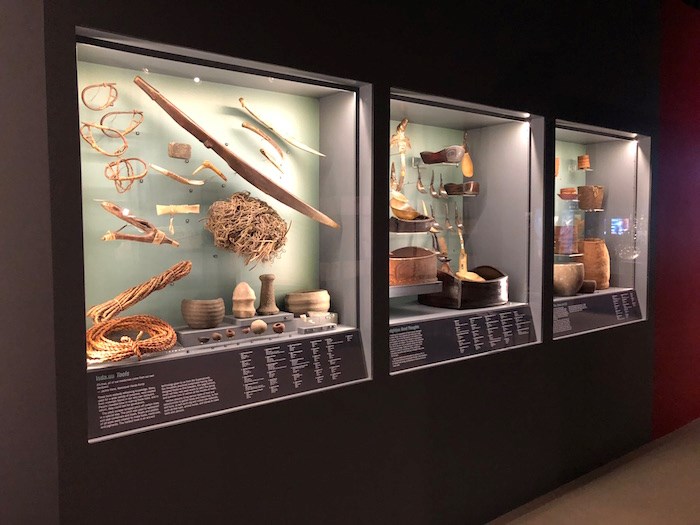 Haida tools (Lindsay William-Ross/Vancouver Is Awesome)
Haida tools (Lindsay William-Ross/Vancouver Is Awesome)
Still, says Collison, "the art transcends much between nations," namely the Haida and the Canadians who colonized B.C.
While it can be uncomfortable to pull back those layers, Jones and those involved in a project like "Haida Now" are committed to making relationships between the Haida and all Canadians stronger and more meaningful. To "unbury the treasure," as Jones puts it, of a people "some forces worked very hard to rub out," is a powerful act, and one all Vancouverites should take notice of.
"Haida Now" runs at the Museum of Vancouver through June 15, 2019. Hours and admission info is available online.


